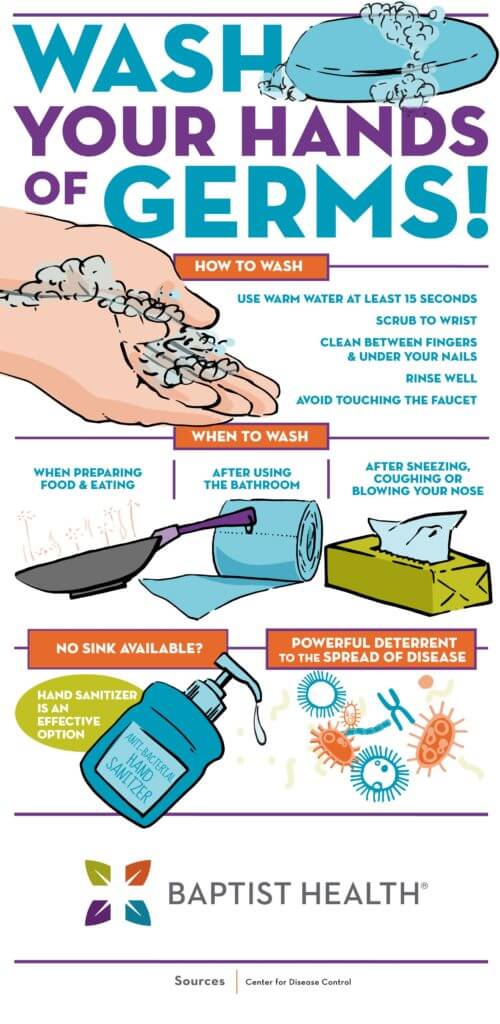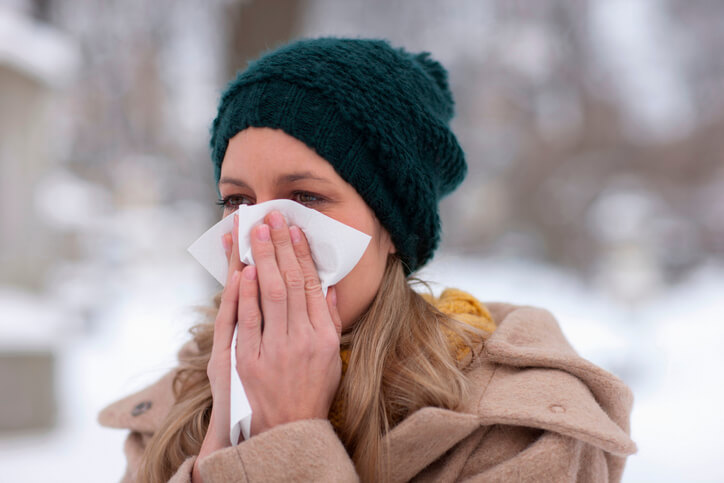Hand Hygiene 101: Proper Hand Washing

One of the most effective and easiest ways to prevent the spread of disease is proper hand washing. As we go throughout the day (touching objects, people, animals and especially money), we accumulate germs on our hands. Then, we touch our eyes, mouths and noses, and without even realizing it, allow bacteria into our bodies. That’s why frequent hand washing is so necessary in germ prevention.
Hand Washing Guidelines
Handwashing Steps
Hand Washing Steps
It may seem like common sense, but most of us don’t follow proper hand washing guidelines. These are the proper hand washing steps for good hand hygiene:
- Wet your hands with warm water and use a nickel- to quarter-sized amount of liquid soap.
- Wash your hands for at least 15 seconds. (About the time it takes to sing “Happy Birthday.”)
- Scrub all the way up to your wrist.
- Don’t forget to clean between your fingers, around the nail bed and under your nails.
- Rinse your hands thoroughly under running water.
- Use a paper towel to dry your hands, if possible.
- Avoid touching the faucet by using your paper towel or elbow to turn it off.
When to Wash Your Hands
It’s important to protect yourself from harmful germs and hand washing is helpful in achieving that goal. Proper hand washing is recommended any time you come into contact with surfaces that are touched frequently by others and before or after certain activities. Of course, while frequent, effective hand washing is advised, you should try to find the right balance so that you don’t spend too much time at the sink.
- Before and after preparing food (especially raw meat)
- Before eating
- After using the bathroom
- After sneezing
- After coughing
- After blowing your nose
- After touching contaminated surfaces, like handrails, doorknobs, and counters
The Importance of Hand Washing
Hand washing may seem simple, but it’s a powerful deterrent to the spread of disease. Teaching people about the proper hand washing technique has been found to:
- Reduce occurrences of diarrhea in the general population by 31%
- Reduce diarrheal illness in people with weakened immune systems by 58%
- Reduce colds and respiratory infections in the general population by 16 – 21%
Hand Hygiene: Hand Sanitizer vs. Hand Washing
It’s a common misconception about germs and hand washing that hand sanitizer directly causes resistance to antibiotics. Yes, alcohol-based hand sanitizers kill almost all germs on hands — good and bad but, anti-bacterial hand sanitizer kills germs more quickly and differently from antibiotics, and the good germs quickly return. That’s because the harmful bacteria exist on the surface of the skin, and the good germs live underneath.
The truth behind this myth is that NOT washing your hands (or NOT using hand sanitizer) contributes to the rise of “superbugs.” Because effective hand washing and sanitizing are so effective at preventing disease, doing so provides excellent germ prevention and reduces the amount of unnecessary antibiotic prescriptions.
Keep in mind that you don’t have to use antibacterial soap to clean your hands properly. Simply physically removing germs from your hands prevents the organisms from causing illness. So, whatever type of soap you use, you can be confident you’re helping yourself avoid illness as long as you practice proper hand-washing techniques.
Stay clean out there!
If you do become sick, our Primary Care physicians can help.




